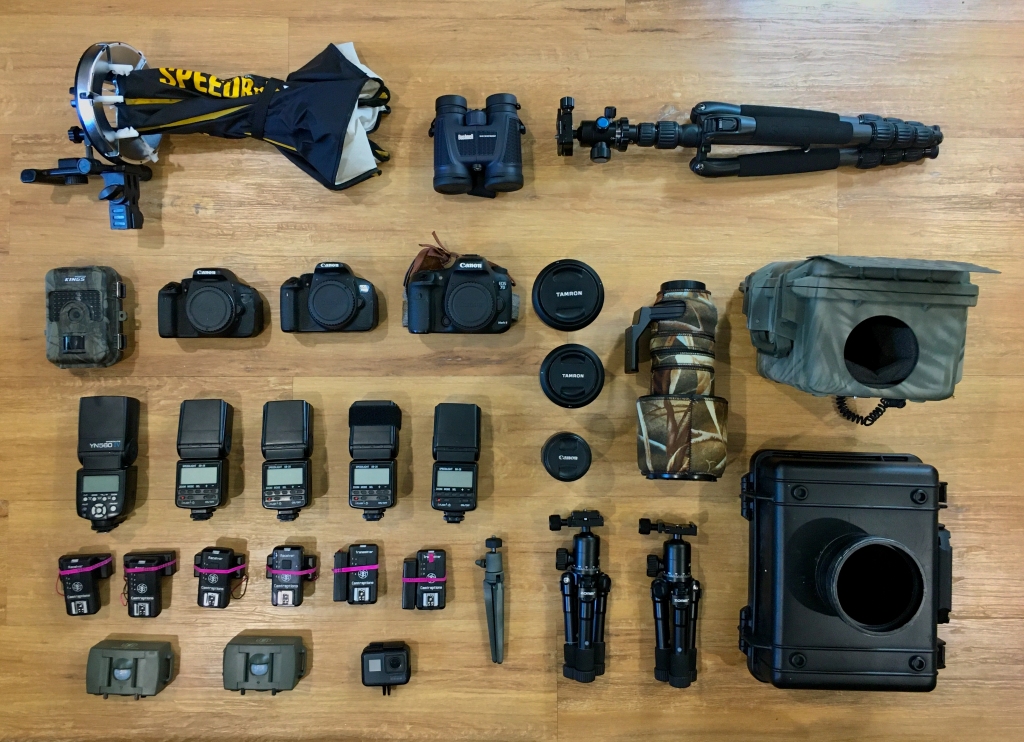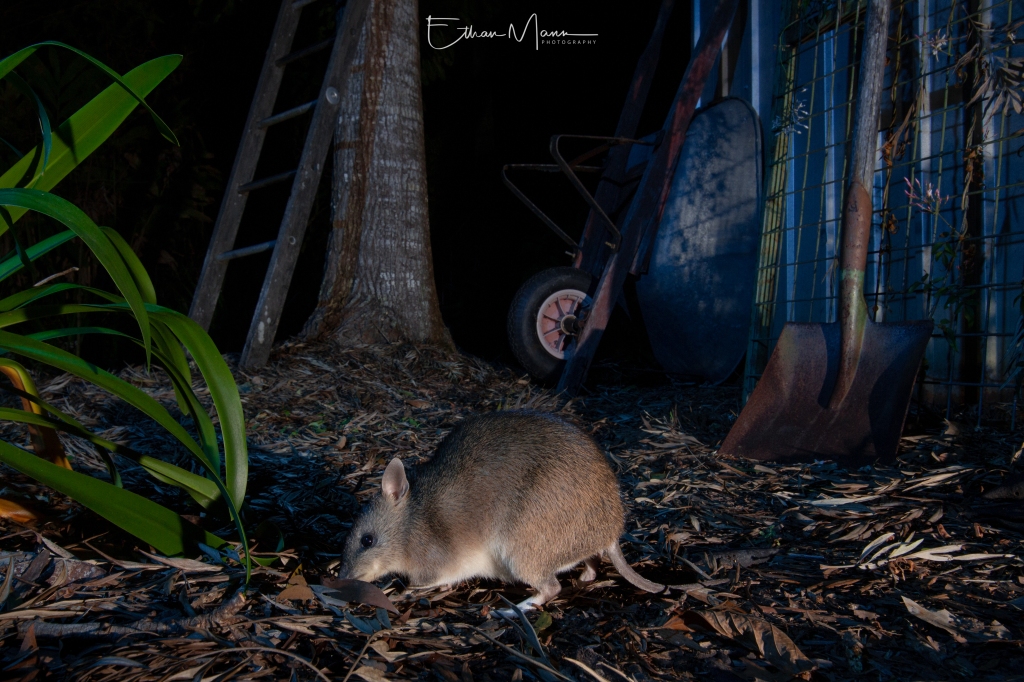Behind the scenes of capturing backyard wildlife
The concept of a photographic series based purely in one backyard stemmed from the bandicoots I had seen bouncing around the lawn of an evening. I began formulating image ideas that would shine a spotlight on these under-appreciated little marsupials. Before long I realised that there were many more species using the backyard for shelter, food and perks. Rather than photograph backyard wildlife broadly, I decided to narrow in and dedicate this project solely to my parent’s 1.25 acre block – where I grew up. The series can be viewed here. As a lot of Australia’s wildlife is nocturnal and difficult to photograph close up, 80% of the images in this series were photographed with DSLR camera traps. I deployed my cameras in custom built housings (to withstand the elements) with flashes and infrared motion sensors, which trigger the camera when a critter walks by. Below are some of the set ups that I used, testing scenes with my hands, or a stuffed animal to see how light would hit fur. You’ll see, many of these sets were not ‘pretty’, but I used what I had available resourcefully.
I shot the whole series with wide-angle lenses (10-24mm on crop sensors), allowing me to encapsulate the animal within its backyard habitat. Camera traps really lend themselves to this, as I can capture images without my presence disturbing an animal’s natural behaviours. I predominately used a Canon 700D and 600D body in these sets – entry level DSLRs that can be obtained quite cheaply, in the case that I lost one to the elements. I used Nikon SB-28 flashguns, Camtraptions v2 PIR sensors with transmitters and receivers to allow the camera to fire the flashes when triggered. Camera trapping is a long-term game, and requires a patience that I did not have before embarking on “A Wild Backyard”.

I spent three months with “The Back-shed Bandicoot” setup, changing batteries every week or fortnight, and making changes to the light and composition until I felt that it was what I wanted. Using 6-10 week timeframes allowed me to ‘work’ the scene and make adjustments, but also allowed the animals time to get used to the camera shutter sound and flashes, allowing for minimal disturbance and more natural poses and behaviours. As hoped the bandicoot came through to dig beside the plants, and I captured a number of frames, including some of it actually nose-deep in the soil.

I utilised cheap trail cameras before I set up my DSLR to see the trails and areas that wildlife were using and then once I set up my DSLR monitor animals’ behaviours as they approached and triggered the cameras. Mostly they would pause to check out the camera, or just continue on with their shenanigans uninterrupted.
“Rodent Control” was actually the first image that I took in this project. Finding the carpet python basking in the shed, I gently placed it onto the bench grinder to show the clutter, nooks and crannies that make a perfect home for a python. With this series I began to sketch images before actually setting up and trying to capture them. This helped me to visualise the composition of scenes and images, and is something I find beneficial to do before deploying a camera trap now.
I utilised props in my images, to help illustrate the backyard habitat. They add value to the compositions, also becoming characters themselves (Such as the ceramic possum in “The Imposter“). Thankfully, backyard wildlife are quite used to changes in their environment, and quickly become comfortable with objects being moved around. Some I used include watering cans, shovels, stakes, tyres, tools and ceramics.
I did not end up losing any equipment to rain or water, though I did have one lens covered in water drops (which took a while to dry) and an occasion where ants infiltrated my camera box and transmitters to escape a wet week (which were extremely annoying and difficult to remove). There were many compositions and ideas that did not make the final set, or that I developed further. Below are some examples, as well as some outtakes and subjects that were not the intended target.
You do not have to venture far to capture great wildlife photos, and focussing on the ‘common’ and frequently seen species challenged me to capture them in new and creative ways. I can’t wait to share my future projects with you. Thanks for reading.
